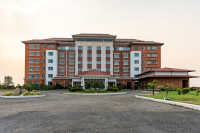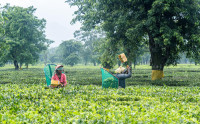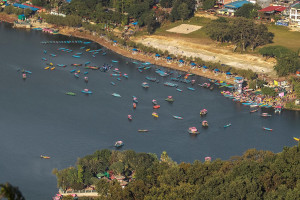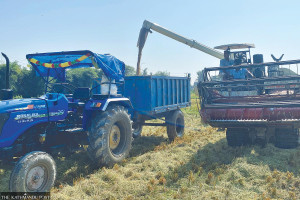Money
Animals worth Rs2b imported in 10 mths
Live animals worth Rs2 billion have been imported into Nepal through the Indian border town of Rupaidiha in the first 10 months of the current fiscal year.
Krishna Prasad Gautam
Live animals worth Rs2 billion have been imported into Nepal through the Indian border town of Rupaidiha in the first 10 months of the current fiscal year.
According to the Regional Animal Quarantine Office Banke, the imports consisted of 172,400 goats, 579 pigs and 221 tonnes of fish. In the last fiscal year, 163,700 goats were imported through Rupaidiha.
The average price of goat is Rs12,000 per head. The office said that goats were relatively cheaper in India, which has led to a rise in imports.
The animals are shipped to major cities like Kathmandu, Pokhara and Birgunj. Among various entry points, Rupaidiha across the border from Nepalgunj has observed the highest animal imports.
According to the office, goats are normally brought from Kalfi, Jhase and Nanpara in India. Likewise, the office said that 5,079 pigs and boars were imported from India during the review period.
These animals are imported from Indian cities like Babagunj and Bahraich. They are normally consumed in Banke and Bardia, said Ram Sewak Tripathi, a veterinary doctor at the quarantine office.
Nearly 10 percent of the imported goats are sent to the Mid- and Far Western regions for rearing, the office said.
Likewise, fish like mungur and rahu naini are imported from Bahraich and Nanpara in India. Fish is consumed in large quantities in neighbouring districts. “Animal imports into Nepal have been gradually increasing due to a rise in demand. However, Nepal does not export animals or birds to India,” said Tripathi.
He said that Nepal had imposed a ban on exporting animals. The quarantine office has collected more than Rs385,000 in taxes in the first 10 months. During this period, illegally imported chicks and broiler chickens numbering 8,900 and 2,233 respectively were destroyed.
Bed Bahadur KC, senior veterinary doctor at the District Livestock Services Office, said that Banke was able to fulfil 80 percent of its requirement of meat products.
According to him, Banke produces 50,000 goats annually. The district has also attained self-sufficiency in dairy products.
The country’s meat production currently stands at 318,000 tonnes. Buffalo is the most popular meat among Nepalis followed by goat, chicken and pig. According to the ministry, buffalo meat accounts for 58 percent of the total meat production.
Mutton is the second most popular meat product after buff, making up 20 percent of the country’s meat requirement. Chicken production fulfils 13 percent of the country’s meat requirement.
Likewise, average milk consumption in Nepal currently stands at 70 litres per person
per year. The ministry said that based on the requirement of 91.5 litres per person per year, each Nepali still faces a deficit of 21.5 litres of milk.




 23.12°C Kathmandu
23.12°C Kathmandu















